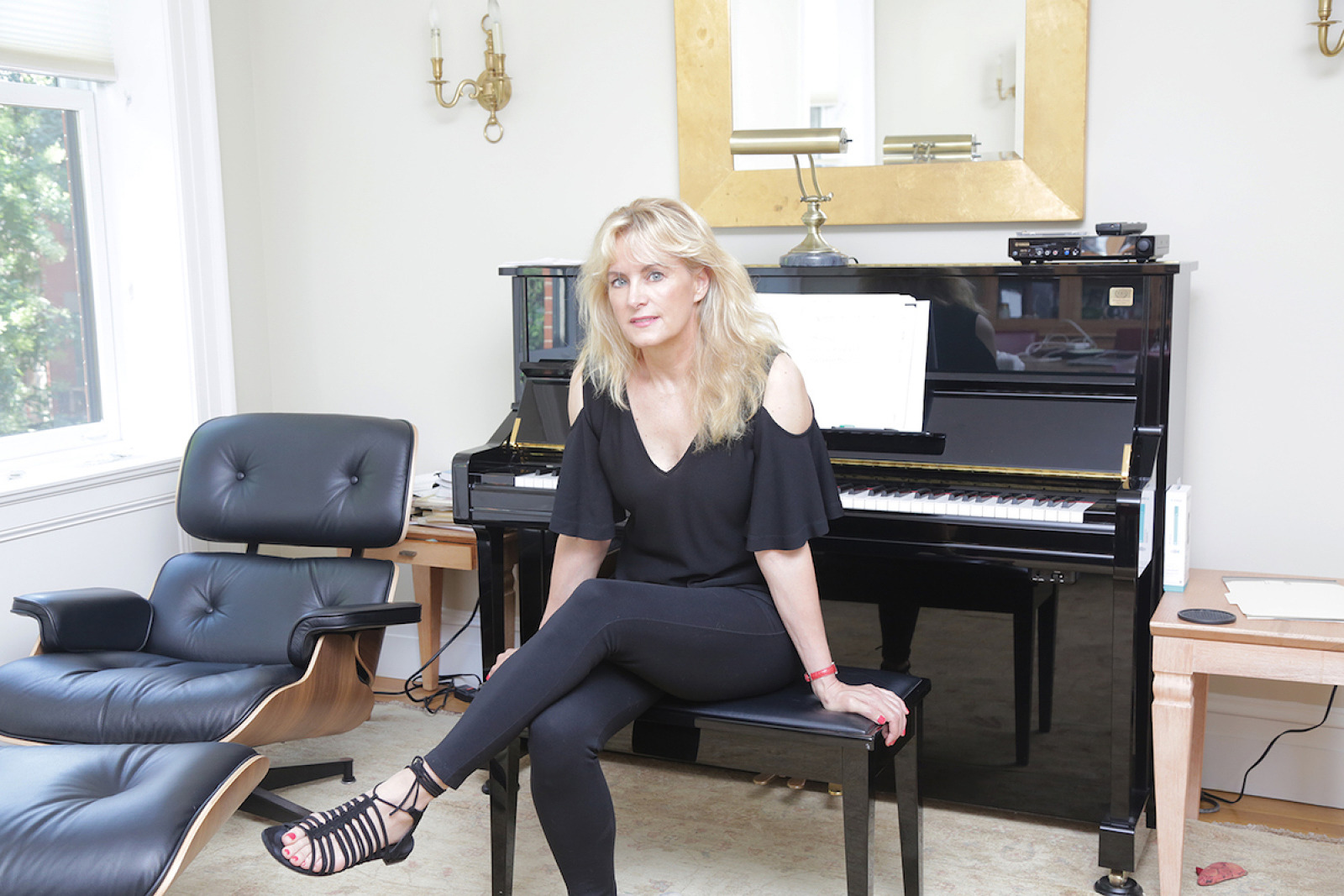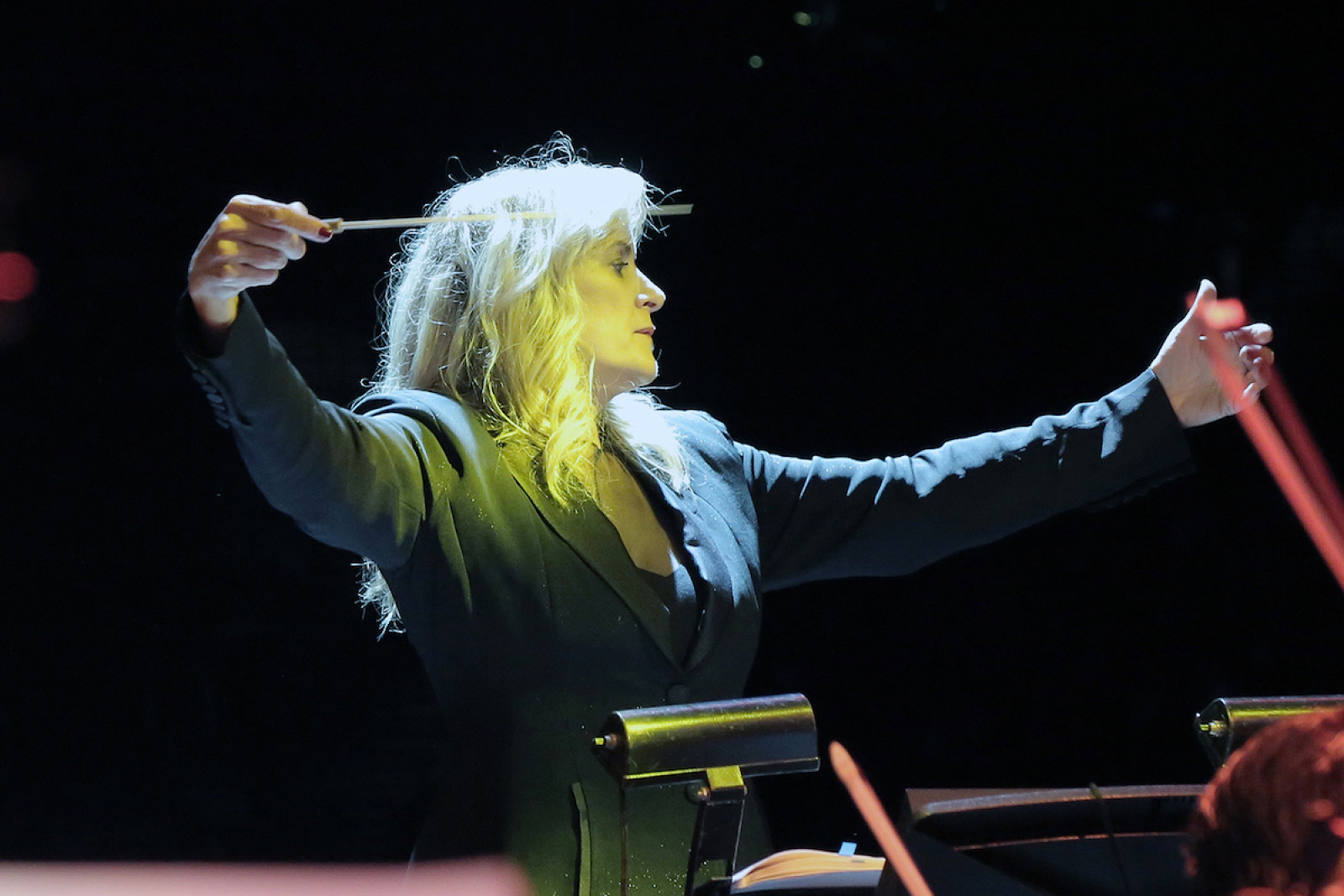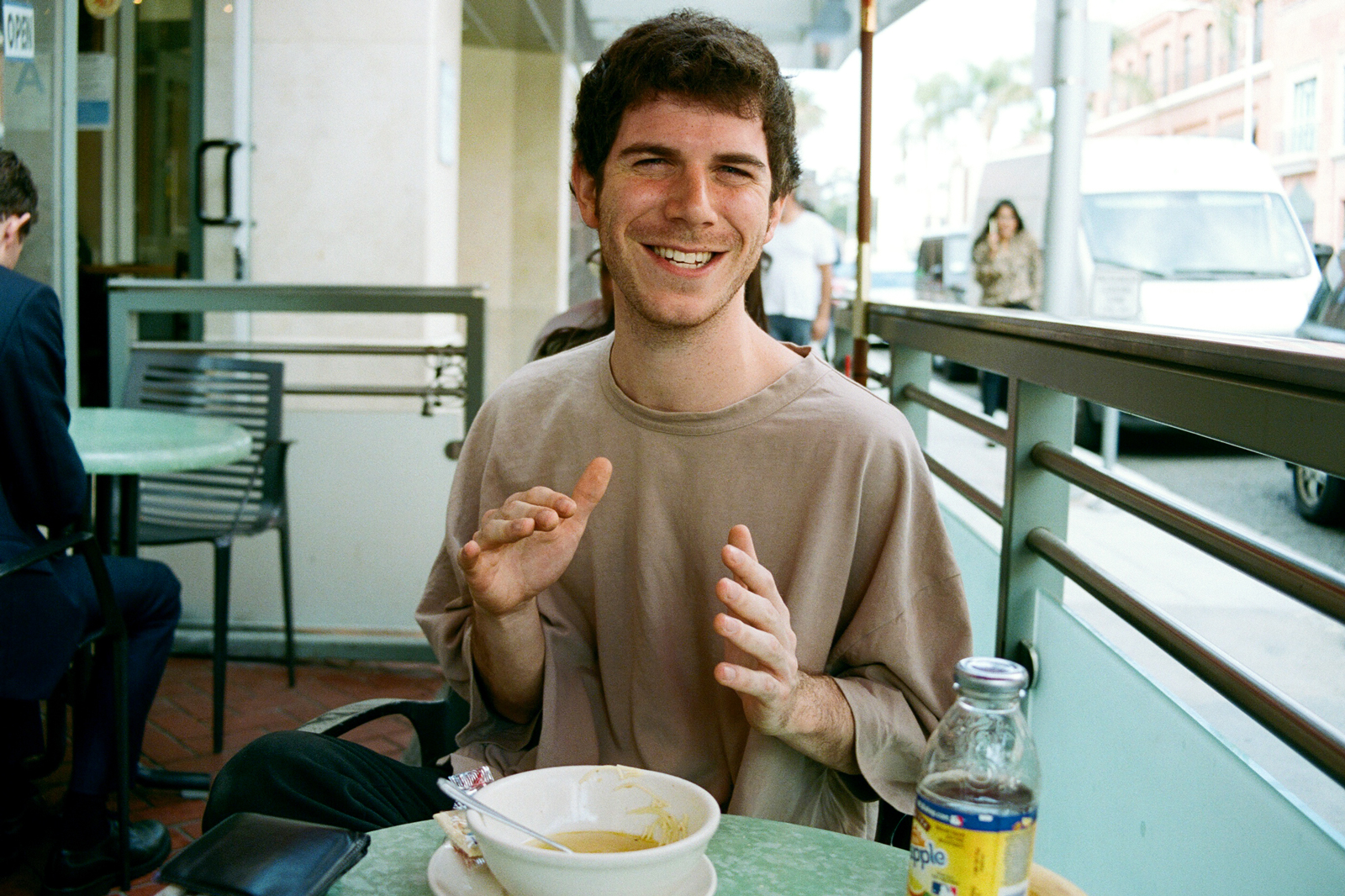Text & Interview: Monica Uszerowicz
Photo & Video: Olimpia Dior
Conductor Amy Andersson has the kind of archetypal origin story that seems, at once, too fantastical and perfect to be real and—on the other hand— totally obvious: as a baby, her crib was in the family music room, right next to the piano where her mother practiced voice lessons. Essentially, Andersson heard classical music, loud and clear and resounding, upon being born.
Though she’s been a musician practically since then, it’s impossible to Google her without stumbling into a K-hole of interviews regarding The Legend of Zelda: Symphony of the Goddesses, which she conducted from January 2015 to January 2017. Beyond the magnificence of that concert on its own—which presents the music of the titular franchise as a four-movement symphony—it’s an appropriate project to associate with Andersson, just by virtue of its aim: translating the magic of classical music into something accessible for a multitude of demographics, even children.
Andersson—who is also a trained pianist, an educator, and a singer—loves classical music with a romantic fervor, and has dedicated her time to sharing it with everyone, helping to dismantle what she describes as a “long-held tradition of…largely white, male European composers with orchestras who severely lack diversity.” In response to the unfortunate and widespread desire to uphold a tradition that’s overwhelmingly Eurocentric and white, Andersson founded Orchestra Moderne NYC, comprised of a diverse group of top musicians.
Her process is at once intuitive and deliberate, a kind of fluidity she owes to hearing classical music since babyhood. She’s conducted operatic and symphonic productions as well as Broadway musicals, and worked with no less than thirty orchestras (her oeuvre ranges from the Royal Philharmonic Orchestra to the Video Game Orchestra of Boston). Below, we discussed with Andersson Orchestra Moderne NYC, the process of creating compositions, and connecting to both the audience and her own body during conducting.
Orchestra Moderne NYC makes its debut at Carnegie Hall on October 7th, with a program celebrating immigration: The Journey to America: From Repression to Freedom. For more information, click here.

Do you feel that orchestral video game performances are helping to shift the demographic of traditional symphony audiences? How so, and why is this important?
This is a question that touches a very important topic to me! Traditional symphony concerts have largely catered to Eurocentric musical tastes. This comes from the fact that classical music has its roots in European musical and artistic culture. So as Europeans immigrated to America, they brought their cultural art forms, such as opera, symphony, and ballet—along with Brahms, Beethoven and Ravel—to concert halls.
Unfortunately, the status quo for the last hundred years has been to uphold that tradition, even as it has become out of sync with our culture at large. It is no surprise that nearly every orchestra in America has been faced with the steep decline in ticket buyers, as younger people don’t feel the the same cultural relevance of hearing Beethoven and Haydn as past audiences did. As a result of this decline, orchestras have been playing video game concerts, film concerts, rock concerts, and experimenting with new concert formats in hopes of attracting new and younger audiences. This has been met with some degree of success, but orchestras are still struggling with declining attendance.
What is lacking, moreover, is the still long-held tradition of performing largely white, male, European composers with orchestras who severely lack diversity in their membership. Symphony orchestras across America do not reflect the diversity of their communities. This is the large musical elephant in the room that very few people talk about.
Tell me about Orchestra Moderne NYC?
After conducting in every major city in America, I decided that I could no longer only stand in front of orchestras that didn’t reflect the diversity of their community. So, I created Orchestra Moderne NYC in May 2017, and recruited a diverse and talented group of top musicians in New York City, where I live. We are making our debut at Carnegie Hall on October 7th, with The Journey to America: From Repression to Freedom. We’re featuring Overture to Light by 10 time Emmy-Awarded composer Lolita Ritmanis, the world premiere of Concerto for Violin and Orchestra by Steven Lebtkin and soloist Momo Wong, and Ellis Island: The Dream of America by Grammy-nominated composer Peter Boyer.
This orchestra’s mission is to perform culturally relevant and relatable music, and promote and perform work by women and minority composers. I created this orchestra because I wanted to be the change in the world that I wanted to see. Relevancy, diversity, and inclusion are my mantras and young people get this, want to see this, and honestly expect this.
You started playing piano at age six. What was it like, balancing the discipline with the sense of youthful play? Are there experiences from that time you still reference today?
Yes, I started piano lessons at the age of six, but it was driven by my sheer love of music and creative curiosity, not by parents who pushed me. So discipline was not part of the needed formula, at least at that age. I spent hours and hours playing piano because it just felt so good!
As I got older, finding the discipline to practice, on top of a busy school and sports schedule later in my teens, was required. But I must say that music was my best friend, an escape from the world, so I readily journeyed to that realm without much resistance.
You teach young musicians, composers, and opera singers. When and where did your interest in opera begin?
I have always loved the human voice, especially the singing voice. I imagine that came from the fact that my baby crib was in the music room next to the piano. My mom practiced her voice lessons there while I napped and she played music CDs, constantly, of famous opera singers. I grew to love and identify with singing and eventually studied voice many years myself, which made conducting opera a natural progression.
As a young trained pianist, I coached singers and accompanied instrumentalists, starting in high school. I went on to composing, learned several foreign languages, and eventually started conducting my own pieces. All the moving parts, so to speak, came together on the podium in front of the orchestra, whether it was in opera productions or symphony concerts.
I became the sum of all my varied training and found I was equipped to tackle almost anything. I am grateful that I took my time to explore all the various musical disciplines, even if it meant I graduated from college a year later!

I conduct video game music and so-called “classical” concerts with the same intentions: Communicate the emotional intensity, connect with the audience, and inspire the musicians. There really is no difference!


How did you transition from working as a musician to becoming a conductor?
As I mentioned, becoming a conductor sprang out of my original experiences of conducting my own compositions. Conducting is a body and sign language that communicates to the orchestra what the music is expressing, and it is this physical expression that is exhilarating, difficult, and rewarding.
After I graduated with my Master’s degree in orchestral conducting, I moved to Germany to pursue my career. I had only been there a few months when I was asked to jump in and conduct several performances of Mozart’s Magic Flute without rehearsals. It was a daunting experience and I learned immediately that preparation is everything. Germans call this type of experience “jumping into cold water.” One either vows to never do it again, or says, “now I really know what I am made of!” I did it many times and found it incredibly valuable.
Can you describe the experience of channeling a composer—both for Symphony of the Goddesses and in general? Is it meditative, intuitive, or more conscious? Or all three?
What a good question! Well, the foundation of good or hopefully great conducting is complete musical preparation. That means studying the score endlessly to learn every detail and nuance notated by the composers. That is one form of channeling the composer’s musical ideas and intentions, so to speak.
The other form is the combination of intuitive and conscious channeling that happens in a live performance. When one masters a skill to a high level, there is a freedom and ability to raise above the technical requirements needed, such as the physical demands of manually conducting a concert. It is possible in some moments to conduct on intuition, and spontaneously create something new and unexpected. That is when sparks fly and magic happens. In that moment I feel the composer, whether living or not, is closely by my side.
Your name is synonymous with the Symphony of the Goddesses. The touring schedule seemed intense. How did you get involved, and how did you nurture yourself on the road?
I toured with Zelda Symphony from January 2015 to January 2017. It was wonderful to be invited, and I have many fond memories of the fans. The touring was at times grueling, but I did focus on nurturing myself with exercise and good nutrition to stay well. But after two years on the road, I was eager to start new projects and explore other music, so I started Orchestra Moderne NYC within six weeks of ending the tour.
Music from pop culture and classical music are obviously very different, but is conducting them so different?
I conduct video game music and so-called “classical” concerts with the same intentions: Communicate the emotional intensity, connect with the audience, and inspire the musicians. There really is no difference!

